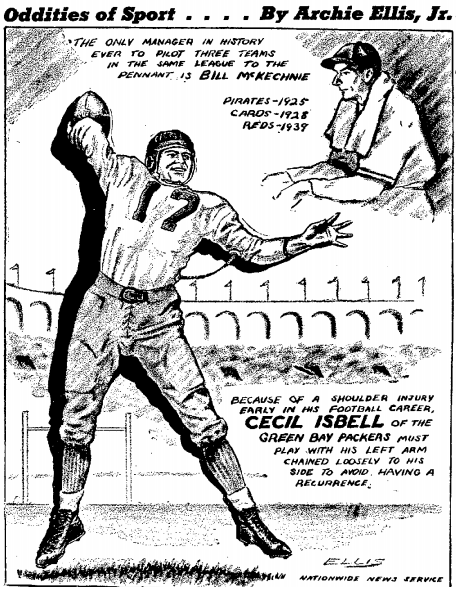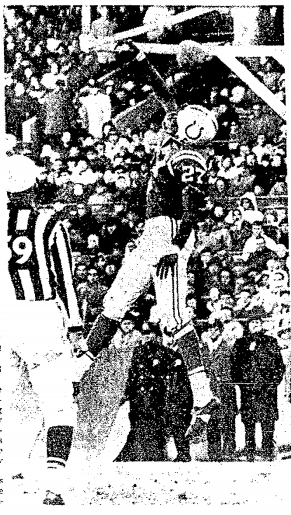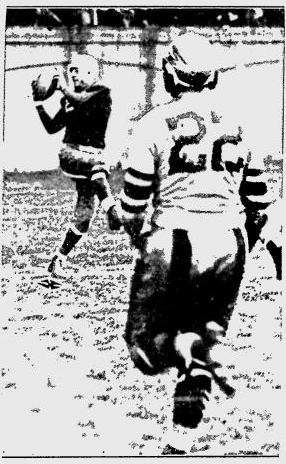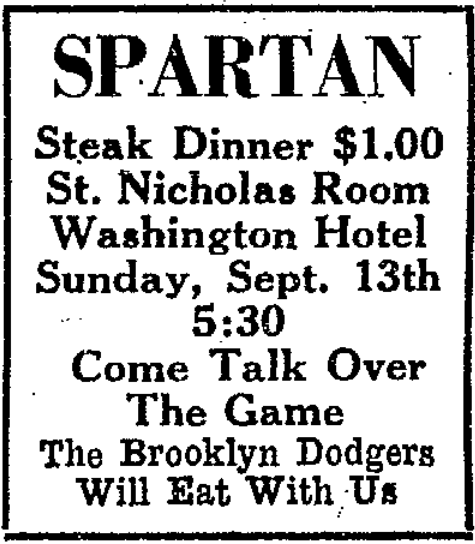Through six NFL seasons, one of which he essentially missed because of a knee injury, Jamaal Charles’ per-carry average stands at 5.58. This just happens to be the all-time record for a running back with 1,000 or more attempts. Whether the Chiefs Pro Bowler can stay at this level, or even close to it, remains to be seen, but it’s a significant accomplishment regardless. After all, it’s hard enough to average 5 yards for a single year, never mind over a six-year stretch. Tony Dorsett, a breakaway back like Charles, never did it (high: 4.84 as a rookie in 1977). Eric Dickerson, another speed guy, did it just once.
Granted, there are many ways to measure a running back, and yards per carry probably isn’t as telling as some others. But as Hall of Famer Joe Perry once told me, “I always thought what mattered most was what you did with the ball when you got it” — and Joe took great pride in his 4.82 career mark (5.04 if you count his two years in the rival All-America Conference). So a little respect, please, for rushing average, one of the redheaded stepchildren of football stats.
At the moment, only one back in NFL history has finished his career with 1,000 carries and a 5-yard average: Jim Brown. If you include guys who only cleared the 750- or 500-carry threshold, a few more make the list — but just a few.
1,000 CARRIES, 5-YARD AVERAGE, CAREER
| Running back, Team(s) |
Years |
Att |
Yds |
Avg |
|---|
| Jamaal Charles*, Chiefs |
2008-13 |
1,043 |
5,823 |
5.58 |
| Jim Brown, Browns |
1957-65 |
2,359 |
12,312 |
5.22 |
750 CARRIES, 5-YARD AVERAGE, CAREER
| Running back, Team(s) |
Years |
Att |
Yds |
Avg |
|---|
| Mercury Morris, Dolphins/Chargers |
1969-76 |
804 |
4,133 |
5.14 |
| Gale Sayers, Bears |
1965-71 |
991 |
4,956 |
5.00 |
500 CARRIES, 5-YARD AVERAGE, CAREER
| Running back, Team(s) |
Years |
Att |
Yds |
Avg |
|---|
| Bo jackson, Raiders |
1987-90 |
515 |
2,782 |
5.40 |
| Bobby Mitchell, Browns/Redskins |
1958-68 |
513 |
2,735 |
5.33 |
| Dan Towler, Rams |
1950-55 |
672 |
3,493 |
5.20 |
| C.J. Spiller*, Bills |
2010-13 |
590 |
3,021 |
5.12 |
| Tommy Wilson, Rams/Browns/Vikings |
1956-63 |
508 |
2,553 |
5.03 |
*active
An awfully small club, isn’t it? And I’m fudging a bit on Mitchell, who switched to receiver with the Redskins and might not have had 500 carries as an Actual Running Back. So if you want to throw him out, go ahead. That would get us down to eight backs, two of them active.
Most of the eight are readily identifiable. Brown and Sayers (as well as Mitchell) are Hall of Famers. Bo Jackson was one of the greatest athletes of the 20th century. And Morris played on two title teams with the Dolphins, including the 17-0 bunch. As for the others, Towler was a terrific fullback who led the league in rushing in 1952, and Wilson at one time held the NFL record for rushing yards in a game (223 vs. the Packers in ’56, his rookie season). Charles and Spiller, I suspect, you’re well acquainted with.
Per-carry averages tend to decline as a player ages (along with everything else, I might add). The longer your career, the less likely you are to average 5 yards. Lenny Moore, for instance, was averaging 5.01 after 10 seasons (964 attempts) but tailed off to 4.84. Hugh McElhenny was at 4.99 through 1,002 carries but finished at 4.70. More recently, the Panthers’ DeAngelo Williams was at 5.04 when he hit 1,000 . . . but has since dropped to 4.84. It makes you appreciate Tiki Barber, who averaged 5.15 in his final two seasons with the Giants at the ages of 30 and 31.
The record book says Barry Sanders averaged 5.0 for his illustrious Lions career, but that’s rounded up. His real average was 4.9866. Sorry, but we don’t round up here at Pro Football Daly, not for something as important as this. Five-Point-O is Five-Point-O, not Four-Point-Nine-Eight-Six-Six.
And how’s this for heartbreak? Sanders was averaging 5 going into his last NFL game in 1998 — 5.0043 to be precise. Alas, he was held to 41 yards in 19 attempts by Ray Lewis and Co., and his average fell to the aforementioned 4.9866. In fact, you can pinpoint the play he went under 5 to stay: his fourth carry of the day, a third-and-6 from the Detroit 41, when Ravens defensive end Keith Washington nailed him for a 3-yard loss. (Though he did rally with back-to-back gains of 31 and 6 in the third quarter to get to 4.9951.)
In case you’re curious, .9866 = 35.5 inches. In other words, Sanders came up half an inch short, per carry, of the Five-Point-O Club. (And if football is a “game of inches,” it’s even more a game of half-inches.) Half an inch, by the way, translates into 41 yards (spread over 3,062 attempts).
Going into this season, the Vikings’ Adrian Peterson is sitting at 4.98, so he also has a chance to join the group. The question is whether, at 29, his rushing average will head north or south. His 4.54 per carry a year ago was the second-lowest of his career.
Whatever your opinion of Charles, there’s no denying he’s putting together a nice resumé. Last season he became just the sixth back — NFL or AFL — to score 12 rushing and 6 receiving touchdowns in a season. The company he keeps:
12 RUSHING AND 6 RECEIVING TOUCHDOWNS IN A SEASON
| Year |
Running Back, Team |
Rush TD |
Rec TD |
|---|
| 2013 |
Jamaal Charles, Chiefs |
12 |
7 |
| 2001 |
Marshall Faulk, Rams |
12 |
9 |
| 2000 |
Marshall Faulk, Rams |
18 |
8 |
| 1975 |
Chuck Foreman, Vikings |
13 |
9 |
| 1975 |
O.J. Simpson, Bills |
16 |
7 |
| 1965 |
Gale Sayers, Bears |
14 |
6 |
| 1962 |
Abner Haynes, Texans (AFL) |
13 |
6 |
That’s twice now I’ve mentioned Charles in the same breath with Sayers. What do you suppose it means?
Sources: pro-football-reference.com, The Pro Football Chronicle




 Here, too, is the
Here, too, is the 